Python newbie here. Imagine a csv file that looks something like this:
(...except that in real life, there are 20 distinct names in the Person column, and each Person has 300-500 rows. Also, there are multiple data columns, not just one.)
What I want to do is randomly flag 10% of each Person's rows and mark this in a new column. I came up with a ridiculously convoluted way to do this--it involved creating a helper column of random numbers and all sorts of unnecessarily complicated jiggery-pokery. It worked, but was crazy. More recently, I came up with this:
import pandas as pd
df = pd.read_csv('source.csv')
df['selected'] = ''
names= list(df['Person'].unique()) #gets list of unique names
for name in names:
df_temp = df[df['Person']== name]
samp = int(len(df_temp)/10) # I want to sample 10% for each name
df_temp = df_temp.sample(samp)
df_temp['selected'] = 'bingo!' #a new column to mark the rows I've randomly selected
df = df.merge(df_temp, how = 'left', on = ['Person','data'])
df['temp'] =[f"{a} {b}" for a,b in zip(df['selected_x'],df['selected_y'])]
#Note: initially instead of the line above, I tried the line below, but it didn't work too well:
#df['temp'] = df['selected_x'] + df['selected_y']
df = df[['Person','data','temp']]
df = df.rename(columns = {'temp':'selected'})
df['selected'] = df['selected'].str.replace('nan','').str.strip() #cleans up the column
As you can see, essentially I'm pulling out a temporary DataFrame for each Person, using DF.sample(number) to do the randomising, then using DF.merge to get the 'marked' rows back into the original DataFrame. And it involved iterating through a list to create each temporary DataFrame...and my understanding is that iterating is kind of lame.
There's got to be a more Pythonic, vectorising way to do this, right? Without iterating. Maybe something involving groupby? Any thoughts or advice much appreciated.
EDIT: Here's another way that avoids merge...but it's still pretty clunky:
import pandas as pd
import math
#SETUP TEST DATA:
y = ['Alex'] * 2321 + ['Doug'] * 34123 + ['Chuck'] * 2012 + ['Bob'] * 9281
z = ['xyz'] * len(y)
df = pd.DataFrame({'persons': y, 'data' : z})
df = df.sample(frac = 1) #shuffle (optional--just to show order doesn't matter)
percent = 10 #CHANGE AS NEEDED
#Add a 'helper' column with random numbers
df['rand'] = np.random.random(df.shape[0])
df = df.sample(frac=1) #this shuffles data, just to show order doesn't matter
#CREATE A HELPER LIST
helper = pd.DataFrame(df.groupby('persons'['rand'].count()).reset_index().values.tolist()
for row in helper:
df_temp = df[df['persons'] == row[0]][['persons','rand']]
lim = math.ceil(len(df_temp) * percent*0.01)
row.append(df_temp.nlargest(lim,'rand').iloc[-1][1])
def flag(name,num):
for row in helper:
if row[0] == name:
if num >= row[2]:
return 'yes'
else:
return 'no'
df['flag'] = df.apply(lambda x: flag(x['persons'], x['rand']), axis=1)
